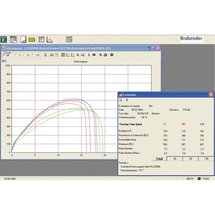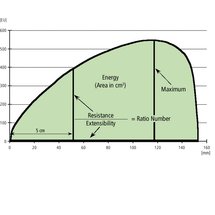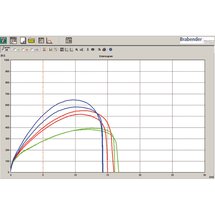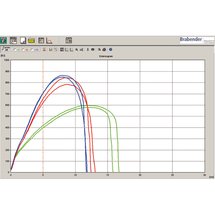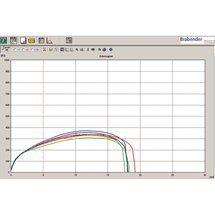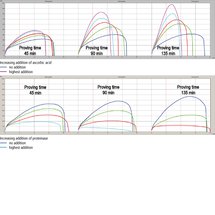Extensograph®-E
Application
Use the Brabender® Extensograph®-E for measuring the stretching properties of your dough, in particular the resistance to extension and the extensibility, to make reliable statements about the baking behaviour of the dough.
Like no other instrument, the Extensograph®-E shows the influence of flour additives like ascorbic acid, enzymes (proteinases), and emulsifiers and, thus, permits to determine the rheological properties of each flour and to adjust the ”rheological optimum“ for the respective purpose.
Principle
Before starting the test in the Extensograph®-E, prepare your sample dough from flour, distilled water, and salt in the Farinograph®
After a certain proving time, the dough is stretched until rupture in the Extensograph®-E. The force exerted is measured and recorded. This procedure is repeated three times. This corresponds to the actual practice in the bread and bread roll production.
The Extensogram recorded on-line, and represented as a color diagram on the monitor, shows the exerted force as a function of the stretching length (time).
The shape of the measuring curve and its variation during the individual proving times, the area below the curve as well as the numerical values of the different evaluation points, allow to make reliable and reproducible statements as to the flour quality and the suitability of the flour for a certain task. Furthermore, the influence of flour additives on the flour characteristics can be made evident.
The Extensogram includes
- Resistance to extension
- Maximum
- Area below the curve (energy)
- Ratio number (extensibility/resistance)
- Ratio number Db/Max (extensibility maximum/ resistance)
Advantages
- Long test duration - results close to practice
- Applicable for all kinds of wheat flour
- Determination of the rheological optimum
- Optimization of wheat and grain mixtures
- Shows the infl uence of additives
- PC connection by USB

